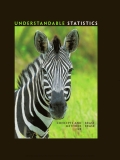
Concept explainers
Please provide the following information for Problems 15–26 and 29–35.
- (a) What is the level of significance? State the null and alternate hypotheses.
- (b) Check Requirements What sampling distribution will you use? What assumptions are you making? Compute the sample test statistic and corresponding z or t value as appropriate.
- (c) Find (or estimate) the P-value. Sketch the sampling distribution and show the area corresponding to the P-value.
- (d) Based on your answers in parts (a) to (c), will you reject or fail to reject the null hypothesis? Are the data statistically significant at level α?
- (e) Interpret your conclusion in the context of the application.
Note: For degrees of freedom d.f. not in the Student’s t table, use the closest d.f. that is smaller. In some situations, this choice of d.f. may increase the P-value a small amount and therefore produce a slightly more “conservative” answer.
Answers may vary due to rounding.
16. Environment: Pollution Index Based on information from The Denver Post, a random sample of n1 = 12 winter days in Denver gave a sample mean pollution index of
Want to see the full answer?
Check out a sample textbook solution
Chapter 8 Solutions
Understandable Statistics: Concepts And Methods
 Glencoe Algebra 1, Student Edition, 9780079039897...AlgebraISBN:9780079039897Author:CarterPublisher:McGraw Hill
Glencoe Algebra 1, Student Edition, 9780079039897...AlgebraISBN:9780079039897Author:CarterPublisher:McGraw Hill College Algebra (MindTap Course List)AlgebraISBN:9781305652231Author:R. David Gustafson, Jeff HughesPublisher:Cengage Learning
College Algebra (MindTap Course List)AlgebraISBN:9781305652231Author:R. David Gustafson, Jeff HughesPublisher:Cengage Learning

